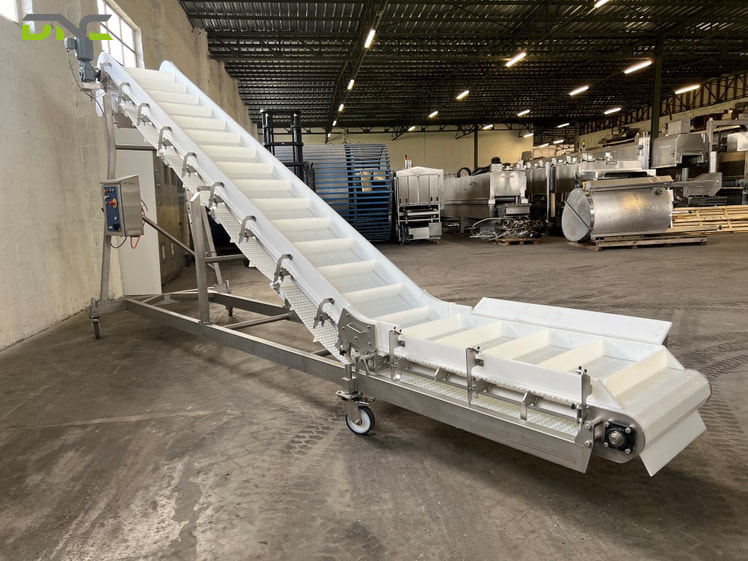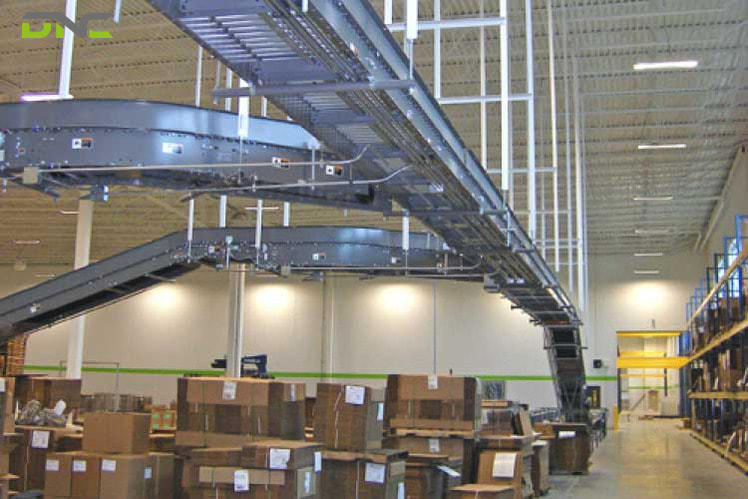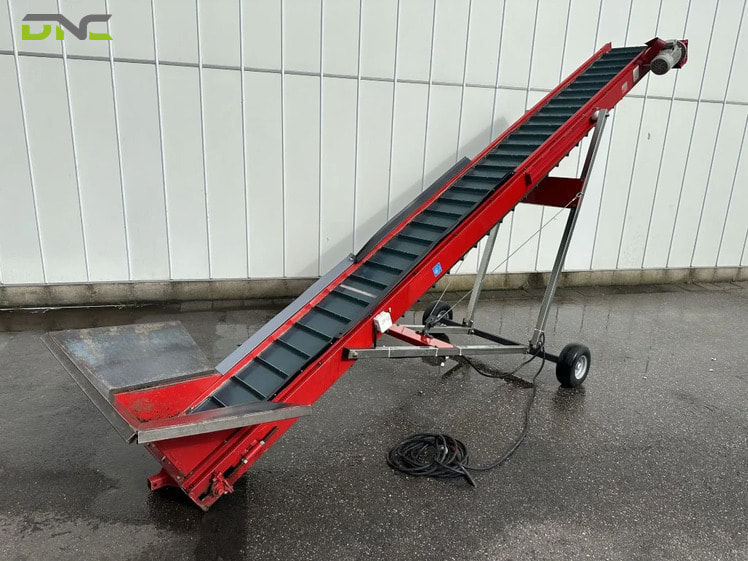Comparing Elevating Conveyor with Conventional Conveyor
In the manufacturing and processing industry, conveyors are an indispensable part of optimizing the material transportation process. However, when it comes to transporting materials vertically, elevating conveyors become a superior solution. In this article, we will compare elevating conveyors and conventional conveyors to help you better understand the differences and choose the optimal solution for your system.
What is an Elevating Conveyor?
An Elevating Conveyor is a special type of conveyor designed to transport materials vertically, from a low point to a high point or vice versa.
This type of conveyor is commonly used in applications that require the transport of materials across different heights during manufacturing, processing or packaging.
Structure and Working Principle
- Elevating Conveyor: Its structure usually includes special buckets, buckets or conveyors that can lift materials vertically, saving space and optimizing the production process.
- Conveyor Belt: Conveyors are usually simple in structure, with one or more layers of rubber or metal belts, can withstand large loads and are widely used in industrial production lines.

Comparison of Elevating Conveyor and Conveyor Belt
Applications in Production
- Elevating Conveyor: Used in applications that require transporting materials to heights, such as in the food industry, mineral processing, or packaging factories.
- Conveyor Belt: Often used in simpler applications, such as transporting raw materials, goods or products in warehouses or production lines that do not require height.
Space Efficiency and Cost Savings
- Elevating Conveyor
With the ability to transport materials vertically, elevating conveyors help optimize factory space, especially in areas with limited floor space. This helps save on floor space costs, especially in factories with limited space.
However, the cost of this system is often higher than that of conventional conveyors due to its complex structure and high technical requirements.
- Conveyor Conventional
Although it cannot save vertical space, conventional conveyors have lower installation and maintenance costs than elevating conveyors.
It is suitable for production lines that do not require material transportation to heights and can operate well on flat or slightly inclined surfaces.
Durability and Load-bearing Capacity
- Elevating Conveyor
Because they have to work in harsh conditions and require lifting materials to high places, elevating conveyor systems are often made from durable materials with high load-bearing capacity.
However, due to their complex structure, these systems also require regular maintenance to ensure stable and efficient operation.
- Conveyor Belts
Although simpler, conveyor belts are also highly durable, especially those made from metal or other heavy-duty materials.
Conveyors can often operate continuously for long periods of time without major maintenance problems if used properly.

Comparison of Elevating Conveyor and Conveyor Belt
Installation and Maintenance Costs
- Elevating Conveyor
The installation cost of elevating conveyors is often higher due to their complex design and advanced technical requirements. These systems also require regular maintenance to keep the lifting mechanisms operating efficiently.
However, in the long run, the space savings and increased production efficiency can help offset the initial cost.
- Conveyor Belt
Conveyors are typically cheaper to install and easier to maintain, making them an economical choice for applications that do not require material to be lifted.
However, if greater capacity and efficiency are required, the system may need to be expanded and modified to meet demand.

Comparison of Elevating Conveyor and Conveyor Belt
Conclusion
Both elevating conveyors and belt conveyors typically have their own advantages and disadvantages. If you are looking for a space-saving solution that can lift materials to a higher level while optimizing your production process, an elevating conveyor is the ideal choice.
However, if your requirements are simply to transport materials on flat surfaces or on a slight incline, a belt conveyor is typically the more cost-effective and easy-to-install option.
When choosing between these two types of conveyors, consider factors such as space availability, production requirements, investment costs, and maintenance to make the decision that best suits your system.
Where to buy reputable automatic Elevating Conveyor lines?
If you are uncertain where to purchase a Elevating Conveyor, DNC Automation is an excellent option. Many customers have trusted DNC to provide automation solutions in the production process and have had positive experiences because:
- DNC is a leading technology, automation, and engineering company in Malaysia with over 15 years of experience in the field of automation
- System integration machinery, Internet of Things (IoT), Industry 4.0, and WinCC Scada System
- Diverse designs and sizes are suitable for many domestic and foreign houses. The equipment is 100% genuine and imported from Malaysia.
Please contact us via the hotline below if you have any questions about the product, we are happy to answer you!
- 10 views
- 0 Comment




Recent Comments